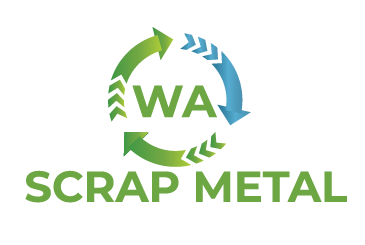Everything You Need To Know About Recycled Aluminium
When it comes to sustainability, the widely used and adaptable metal aluminium has a lot of promise. Aluminium recycling helps create a more sustainable and environmentally friendly future by saving vital resources.
We will dig into the interesting world of recycled aluminium in this article, looking at its definition, the recycling procedure, localised remelting, sustainability challenges, the many potential applications it can provide, and the benefits and drawbacks of recycling aluminium.
Let’s start the quest packed with insights and possibilities!
The Power of Recycling | The Beginning of Second Life
What Is Recycled Aluminium?
To eliminate the necessity for mining virgin aluminium, recycled aluminium refers to the process of recovering aluminium scrap or goods and turning it into new ones.
It entails turning scrap aluminium into a useful resource that can be utilised to create a variety of goods. The beauty of recycled aluminium is that it can be indefinitely recycled without losing any of its performance or quality.
From Waste to Wonder | Unwrapping Aluminium Recycling Process
How Is Aluminium Recycled?
- Collection and Sorting: The buying, collecting and categorising of aluminium scrap is the first stage in the recycling of aluminium. This can include aluminium foil, beverage cans, automobile components, construction supplies, and other items. The aluminium scrap price is subject to market trends.
- Shredding and Melting: After being collected, aluminium scrap is shredded to create smaller pieces. Then, these fragments are melted in enormous furnaces to produce liquid aluminium.
- Purification and Alloying: To get the ideal qualities and composition for particular uses, the molten aluminium scrap is further purified and alloyed. This guarantees that the recycled aluminium complies with the necessary criteria, ensuring the recycled aluminium meets the required standards.
- Casting and Forming: Scrap Aluminium that has been refined is cast into ingots or other forms that may be utilised as raw materials in a variety of industrial processes. These shapes can be processed further and made into a variety of items.
The Role of Local Aluminium Remelting | Supporting Local Economies
The local remelting of aluminium is crucial to the recycling process. Remelting plants allow Metal recyclers to process and recycle scrap aluminium locally rather than exporting it, creating job opportunities and lowering transportation-related carbon emissions.
This decentralised strategy encourages a circular and sustainable economy, fostering regional growth and employment creation.
Alleviating Ecological Concerns |The Sustainability of Aluminium
Is aluminium recyclable & sustainable?
Aluminium recycling is an environmentally friendly decision since it has several advantages:
- Resource Conservation: Aluminium recycling conserves natural resources like bauxite by using less energy and reducing the need for primary aluminium manufacturing.
- Energy Efficiency: Aluminium recycling uses substantially less energy than producing it from scratch, which helps to fight climate change by reducing glasshouse gas emissions.
- Landfill Diversion: Aluminium recycling prevents it from ending up in landfills, cutting down on waste and pollution.
- Circular Economy: Aluminium recycling complies with the tenets of a circular economy, extending the useful life of resources and lowering reliance on raw materials.
The Vast Applications of Recycled Aluminium | Limitless Manufacturing
What Can You Make With Recycled Aluminium?
Recycled aluminium is used in a variety of goods and sectors, providing countless opportunities. A few noteworthy uses of aluminium scrap are:
- Packaging: Because they are lightweight, durable, and corrosion-resistant, aluminium cans, foils, and containers are often used in the food and beverage business.
- Construction: Recycled aluminium is used in construction materials like windows, doors, roofs, and building facades because it is strong, durable, and flexible in terms of design.
- Transportation: Aluminium recycling allows the automotive and aerospace sectors to produce automobile parts, aircraft parts, and vehicle chassis that are lighter and more fuel-efficient.
- Consumer Goods: Recycled aluminium is a key component in the creation of a variety of consumer goods, including furniture, electronics, appliances, and home décor.
Establishing Green Practices | Advances in Sustainable Aluminium Manufacturing
To warrant the sustainability of aluminium, manufacturers and Metal recyclers are applying innovative practices:
- Renewable Energy Integration: To reduce carbon emissions, aluminium manufacturers are progressively integrating renewable energy sources, such as solar and wind power, into their operations.
- Closed-Loop Systems: Within industrial plants, closed-loop aluminum recycling systems encourage the effective use of materials, cutting down on waste, and saving resources.
- Life Cycle Assessments: To better understand the environmental effect of their goods and to make more sustainable decisions throughout the manufacturing process, manufacturers carry out life cycle assessments.
Pros & Cons Of Aluminium Recycling | Weighing the Balance
While aluminum recycling has a lot of benefits, it is essential to consider both sides of the coin.
Pros:
- Resource Conservation: Aluminium recycling helps protect natural resources and lessens the demand for mining.
- Energy Efficiency: Recycling uses a lot less energy than producing aluminium from scratch, which reduces glasshouse gas emissions.
- Job Creation: The recycling sector creates jobs and boosts regional economies.
- Waste Reduction: Aluminium recycling keeps recyclables out of landfills and helps to keep the environment cleaner.
Cons:
- Collection Challenges: Logistics might be difficult when collecting aluminium waste products, thus effective processes and infrastructure are needed for efficient aluminium recycling.
- Contamination Issues: During collecting and sorting, contamination can happen and degrade the quality of recycled aluminium.
- Downcycling: Some recycled aluminium goods could be of lower quality than the original, leaving fewer alternatives for reuse.
The Power of Recycled Aluminium | Way to a Sustainable Future
Recycled aluminium is a catalyst for change rather than merely a substance. We make great progress towards creating a more sustainable and circular economy by adopting aluminium recycling.
Metal recyclers can protect the environment by encouraging and supporting the use of recycled aluminium by people, businesses, and communities. Together, let’s pave the way for a greener, brighter future where recycled aluminium’s limitless potential shapes a sustainable environment for future generations.
In conclusion, recycled aluminium travels a path of innovation, change, and environmental responsibility. By mastering the aluminium recycling process, pursuing its uses, and appreciating its sustainability advantages, we empower ourselves to make decisions that improve the future.
So let’s work together and begin this amazing adventure where recycled aluminium becomes a homage to our effort to a sustainable future and a symbol of progress.
FAQs
What are 3 commonly recycled Aluminium products?
Aluminium cans, building materials, and automotive parts are the 3 most commonly recycled aluminium products.
What are the disadvantages of recycled Aluminium?
The requirement to separate aluminium from steel, plastic, and other waste is one of the main drawbacks of recycling aluminium. Aluminium loses quality when it is recycled repeatedly without proper purification.
Therefore, a new aluminium product will be of greater quality than a recycled aluminium product. The Sorting takes time and is expensive.
What is aluminium recycling most important for?
Utilising recycled aluminium has several advantages for the environment, including lowering energy consumption, mining pollution, shipping pollution, and carbon dioxide emissions. During fabrication, heating and remelting the metal consumes the majority of the energy consumed in aluminium die casting.
What are the four stages of recycling aluminum?
Blocks of aluminium material are transferred to a reprocessing facility where they undergo four steps: shredding, de-coating, melting, and casting.
Is recycled aluminum eco-friendly?
Because of its sustainability, aluminium, sometimes referred to as the “green metal,” is one of the metals that is least harmful to the environment.
Aluminium is the most recyclable industrial material and can be recycled indefinitely without losing any of its original properties.
In addition, aluminium recycling conserves 95% of the energy required for its raw material manufacturing.
What are the 3 advantages of recycling Aluminium?
Recycling aluminium offers environmental benefits by saving up to 95% of energy compared to producing new aluminium.
It also has economic advantages, creating jobs and reducing reliance on expensive mining processes.
Additionally, aluminum’s infinite recyclability makes it a sustainable solution for a circular economy.
Is recycling aluminum better than plastic?
Starting with its recycling potential, aluminium is superior to plastic in many respects. And things only get better from here.
Easily and endlessly recyclable, aluminium is a recycling hero. In actuality, today’s consumption of aluminium accounts for roughly 75% of its total production.
Why is it better to recycle aluminum than plastic?
When seen through the prism of the environment, plastic poses a significantly greater risk than metal. Unlike plastic, which degrades when recycled, aluminium can be recycled indefinitely, saving more than 90% of the energy required to produce new metal.
Why is aluminium recycled so much?
Aluminium recycling cans relieve landfill site burden and conserve energy and natural resources. There would be around 14 million fewer trash cans dumped into landfills each year if all aluminium cans sold were recycled.
How pure is recycled aluminum?
100% of the aluminium can easily be recycled. Additionally, 75% of the aluminium that has ever been produced is still in circulation. Aluminium is the ideal, eco-friendly alternative to primary aluminium since it keeps all of its mechanical and physical qualities.
Why is aluminium recycling easy?
With only 5% of the energy and emissions required to produce it from the basic source bauxite, aluminium is the most economical commodity to recycle. Additionally, all of the scraps that are left behind after producing aluminium may be melted down and reused repeatedly.
What is the lifespan of an aluminium can?
The typical lifespan of an aluminium can is six weeks, which indicates that it takes six weeks on average to produce, fill, sell, recycle, and remanufacture a beverage can.
Every year, we consume more than 80,000,000,000 aluminium soda cans. In a landfill, aluminium takes 200–500 years to completely decompose.
How many times can aluminum be recycled?
It is endlessly recyclable. Almost little is lost when one aluminium can is transformed into another aluminium can. Contrarily, the majority of food-grade plastics are “downcycled,” meaning that each time they are recycled, their quality declines.
Is aluminum more recyclable than glass?
The most recyclable product is aluminium cans. In comparison to glass bottles, they can be recycled more easily. In comparison to recycling glass bottles, recycling cans uses less energy.
Is aluminium better than stainless steel for recycling?
Aluminium recycling uses less energy and time than recycling steel. Aluminium is 100 per cent recyclable and never loses its quality.
Is aluminum safe to drink from?
Because aluminium is safe to use for drinking, eating, and cooking, it is firmly chosen to use it for the environmentally friendly reusable bottle. Some of the safest drinking vessels are those made of glass, aluminium, and stainless steel.
Why isn’t water sold in aluminium cans?
Why don’t we provide water in cans rather than plastic bottles? The internal pressure of the aluminium can is an essential component of the can’s construction, which explains why you don’t see more canned flat water. Of course, you may purchase canned water, but 99.44% of the time, it will have bubbles.
What grade of aluminum is purest?
1100 Aluminum
Due to its minimum 99% purity, this is the purest form of aluminium that is commercially accessible. It is incredibly ductile and workable.
Is aluminium recycling profitable?
Due to their high market value, recycling procedures for metals like copper and aluminium are more profitable.
Can aluminum rust?
Does aluminium corrode? Although it doesn’t rust, aluminium does corrode. The very resilient aluminium oxide layer protects the metal from corrosion by renewing itself when damaged. However, some elements may make the coat fragile, allowing the metal to be exposed.


